预约演示
更新于:2025-12-22

Imbria Pharmaceuticals, Inc.
更新于:2025-12-22
概览
标签
内分泌与代谢疾病
心血管疾病
遗传病与畸形
小分子化药
疾病领域得分
一眼洞穿机构专注的疾病领域
暂无数据
技术平台
公司药物应用最多的技术
暂无数据
靶点
公司最常开发的靶点
暂无数据
| 疾病领域 | 数量 |
|---|---|
| 内分泌与代谢疾病 | 2 |
| 排名前五的药物类型 | 数量 |
|---|---|
| 小分子化药 | 2 |
| 排名前五的靶点 | 数量 |
|---|---|
| ACAA2 x HADHB | 1 |
| SDH2(线粒体复合体II;琥珀酸脱氢酶) | 1 |
关联
2
项与 Imbria Pharmaceuticals, Inc. 相关的药物作用机制 ACAA2抑制剂 [+2] |
在研适应症 |
最高研发阶段临床2期 |
首次获批国家/地区- |
首次获批日期- |
靶点 |
作用机制 SDH2 modulators |
在研适应症 |
非在研适应症- |
最高研发阶段临床前 |
首次获批国家/地区- |
首次获批日期- |
7
项与 Imbria Pharmaceuticals, Inc. 相关的临床试验NCT07023614
A Global Phase 2b, Randomized, Double-Blinded, Placebo-Controlled Trial to Evaluate the Efficacy and Safety of Ninerafaxstat in Patients With Symptomatic Non-Obstructive Hypertrophic Cardiomyopathy - FORTITUDE-HCM
FORTITUDE-HCM is a global, multicenter, double-blind, parallel-group, placebo-controlled Phase 2b study that will assess the efficacy and safety of ninerafaxstat compared to placebo on top of Standard of Care in patients with symptomatic nHCM
开始日期2025-10-06 |
申办/合作机构 |
NCT04826185
A Randomized, Double-Blinded, Placebo-Controlled Study to Evaluate the Safety, Tolerability, and Efficacy of IMB-1018972 in Patients With Non-obstructive Hypertrophic Cardiomyopathy
The purpose of this study is to assess the safety, tolerability, and potential efficacy of IMB-1018972 in patients with non-obstructive HCM.
开始日期2021-06-14 |
申办/合作机构 |
NCT04826172
A Randomized, Double-Blind, Placebo-Controlled, Exploratory Study on the Safety, Tolerability, and Pharmacodynamics of IMB-1018972 in Subjects With Angina Due to Obstructive Coronary Artery Disease
The purpose of this study is to assess the safety and tolerability of IMB-1018972 in subjects with obstructive CAD and inducible ischemia.
开始日期2021-04-23 |
申办/合作机构 |
100 项与 Imbria Pharmaceuticals, Inc. 相关的临床结果
登录后查看更多信息
0 项与 Imbria Pharmaceuticals, Inc. 相关的专利(医药)
登录后查看更多信息
6
项与 Imbria Pharmaceuticals, Inc. 相关的文献(医药)2024-05-01·Journal of the American College of Cardiology
Safety and Efficacy of Metabolic Modulation With Ninerafaxstat in Patients With Nonobstructive Hypertrophic Cardiomyopathy
Article
作者: Yavari, Arash ; Sarwar, Rizwan ; Patel, Jai ; Choudhury, Lubna ; Phelan, Dermot M J ; Neubauer, Stefan ; Cresci, Sharon ; Martinez, Matthew W ; Massera, Daniele ; Nagueh, Sherif F ; Valkovič, Ladislav ; Abraham, Theodore P ; Udelson, James E ; Maron, Martin S ; Raman, Betty ; Chamberlin, Paul ; Abd Samat, Azlan Helmy ; Masri, Ahmad ; Wever-Pinzon, Omar ; Mahmod, Masliza ; Adler, Eric ; Dehbi, Hakim-Moulay ; Watkins, Hugh ; Lewis, Gregory D
BACKGROUND:
In nonobstructive hypertrophic cardiomyopathy (nHCM), there are no approved medical therapies. Impaired myocardial energetics is a potential cause of symptoms and exercise limitation. Ninerafaxstat, a novel cardiac mitotrope, enhances cardiac energetics.
OBJECTIVES:
This study sought to evaluate the safety and efficacy of ninerafaxstat in nHCM.
METHODS:
Patients with hypertrophic cardiomyopathy and left ventricular outflow tract gradient <30 mm Hg, ejection fraction ≥50%, and peak oxygen consumption <80% predicted were randomized to ninerafaxstat 200 mg twice daily or placebo (1:1) for 12 weeks. The primary endpoint was safety and tolerability, with efficacy outcomes also assessed as secondary endpoints.
RESULTS:
A total of 67 patients with nHCM were enrolled at 12 centers (57 ± 11.8 years of age; 55% women). Serious adverse events occurred in 11.8% (n = 4 of 34) in the ninerafaxstat group and 6.1% (n = 2 of 33) of patients in the placebo group. From baseline to 12 weeks, ninerafaxstat was associated with significantly better VE/Vco2 (ventilatory efficiency) slope compared with placebo with a least-squares (LS) mean difference between the groups of -2.1 (95% CI: -3.6 to -0.6; P = 0.006), with no significant difference in peak VO2 (P = 0.90). The Kansas City Cardiomyopathy Questionnaire Clinical Summary Score was directionally, though not significantly, improved with ninerafaxstat vs placebo (LS mean 3.2; 95% CI: -2.9 to 9.2; P = 0.30); however, it was statistically significant when analyzed post hoc in the 35 patients with baseline Kansas City Cardiomyopathy Questionnaire Clinical Summary Score ≤80 (LS mean 9.4; 95% CI: 0.3-18.5; P = 0.04).
CONCLUSIONS:
In symptomatic nHCM, novel drug therapy targeting myocardial energetics was safe and well tolerated and associated with better exercise performance and health status among those most symptomatically limited. The findings support assessing ninerafaxstat in a phase 3 study.
2022-12-01·Journal of patient-reported outcomes
Comparability of a provisioned device versus bring your own device for completion of patient-reported outcome measures by participants with chronic obstructive pulmonary disease: qualitative interview findings
Article
作者: Knight-West, Oliver ; O'Donohoe, Paul ; Hudgens, Stacie ; Byrom, Bill ; Crescioni, Mabel ; Newton, Louise ; Reasner, David S ; Eremenco, Sonya ; Vallow, Susan ; Symonds, Tara
Abstract:
Background:
There is interest in participants using their own smartphones or tablets (“bring your own device”; BYOD) to complete patient-reported outcome (PRO) measures in clinical studies. Our study aimed to qualitatively evaluate participants’ experience using a provisioned device (PD) versus their own smartphone (BYOD) for this purpose.
Methods:
Participants with chronic obstructive pulmonary disease (COPD) were recruited for this observational, cross-over study and completed PRO measures daily on one device type for 15 days, then switched to the other device type to complete the same measures for another 15 days. After each 15-day period, semi-structured interviews were conducted about their experience with the device.
Results:
Of 64 participants enrolled, the final qualitative analysis populations comprised those who participated in an interview without protocol violations. Thus, the qualitative longitudinal population (LP) included n = 57 (89%), while the qualitative cross-sectional population (CSP) included n = 60 (94%). CSP participants found both device types easy to use. Twenty CSP participants (33%) reported missing data entry on at least one day when using PD, and 24 (40%) reported missing at least one day when using BYOD. In the LP, preference for one of the device types was somewhat evenly split; 45.6% (n = 26) preferred PD and 50.9% (n = 29) preferred BYOD. The most common reason for preferring PD was that it was “dedicated” to the study; the “convenience” of carrying a single device was the main reason for preferring BYOD.
Conclusion:
The findings from the interviews demonstrated few differences in participants’ experience completing PRO measures on a PD versus BYOD. Our study supports the use of BYOD as a potential addition to PD for collecting PRO data and contributes evidence that BYOD may be employed to collect PRO data in demographically diverse patient populations.
2022-05-01·Therapeutic innovation & regulatory science4区 · 医学
Best Practice Recommendations: User Acceptance Testing for Systems Designed to Collect Clinical Outcome Assessment Data Electronically
4区 · 医学
Article
作者: Howry, Cindy ; Knaus, Christian ; Vallow, Susan ; Dahya, Bela ; Crescioni, Mabel ; Cohen, Jeff ; Reasner, David S ; Eremenco, Sonya ; Delong, Patricia ; Zarzar, Katherine ; Crager, Jennifer ; Gordon, Sarah ; Barsdorf, Alexandra I
Abstract:
Implementing clinical outcome assessments electronically in clinical studies requires the sponsor and electronic clinical outcome assessment (eCOA) provider to work closely together to implement study-specific requirements and ensure consensus-defined best practices are followed. One of the most important steps is for sponsors to conduct user acceptance testing (UAT) using an eCOA system developed by the eCOA provider. UAT provides the clinical study team including sponsor or designee an opportunity to evaluate actual software performance and ensure that the sponsor’s intended requirements were communicated clearly and accurately translated into the system design, and that the system conforms to a sponsor-approved requirements document based on the study protocol. The components of an eCOA system, such as the study-specific application, customization features, study portal, and custom data transfers should be tested during UAT. While the provider will perform their own system validation, the sponsor or designee should also perform their due diligence by conducting UAT. A clear UAT plan including the necessary documentation may be requested by regulatory authorities depending on the country. This paper provides the electronic patient-reported outcome (ePRO) Consortium’s and patient-reported outcome (PRO) Consortium’s best practice recommendations for clinical study sponsors or their designee for conducting UAT with support from eCOA providers to ensure data quality and enhance operational efficiency of the eCOA system. Following these best practice recommendations and completing UAT in its entirety will support a high quality eCOA system and ensure more reliable and complete data are collected, which are essential to the success of the study.
28
项与 Imbria Pharmaceuticals, Inc. 相关的新闻(医药)2025-12-12
·游褒禅山
11月,海外top vc机构在创新药领域共发生17起投资事件,其中种子轮1起,A轮7起,B轮3起,C轮1起,D轮1起,战略投资3起,IPO事件1起;7起并购事件。
种子轮,Accipiter Biosciences,1200万美元。从头设计蛋白,开发双重激动剂
A+轮,MindImmune Therapeutics,1020万美元。开发抗体阻止一种外周固有免疫细胞(CD11c+细胞)进入大脑引起突触损伤,从而抑制与AD进展相关的神经炎症。
A+轮,T-Therapeutics,3200万美元。开发TCR-CD3新型TCE。
A轮,Bambusa Therapeutics,金额未披露。基于半衰期延长双特异性抗体技术平台,开发IL-4Rα / IL-31治疗特异性皮炎,IL-4Rα / IL-5治疗2型炎症性疾病如COPD
A轮,Quarry Thera,3200万美元。PROTAC先驱Craig Crews教授联合创办,新公司基于三种来自其实验室的诱导接近(induced proximity)新技术,研究尚未发表。
A轮,Dayra Therapeutics,2000万美元。由Versant Ventures孵化的口服大环肽公司,与biogen达成合作,首付款5000万美元
A轮,Braveheart,1.85亿美元。这是一家newco公司,25年9月恒瑞将心肌肌球蛋白(Myosin)选择性可逆抑制剂HRS-1893在大中华以外全球范围内开发、生产和商业化的独家权利有偿许可给Braveheart Bio。Braveheart Bio将向恒瑞支付6500万美元首付款(含3250万美元现金和等值3250万美元的Braveheart Bio公司股权)和完成技术转移后的1000万美元近期里程碑款,总计7500万美元,还有资格获得与临床开发和销售相关的里程碑付款,最高可达10.13亿美元。
A轮,Azalea Therapeutics,6500万美元。Jennifer Doudna领衔的体内CAR-T公司,Azalea 的双载体平台结合了靶向 T 细胞的 EDV(递送 Cas9 RNP 复合物)和携带无启动子 CAR 模板的人 T 细胞嗜性 AAV。
B+轮,Imbria Pharmaceuticals,金额未披露。核心管线产品Ninerafaxstat是一种新型心脏线粒体调节剂和部分脂肪酸氧化(pFOX)抑制剂,治疗nHCM患者
B轮,Gate Bioscience,6500万美元。开发创新分子门药物(Molecular Gate),通过在致病蛋白的源头(即细胞内)阻断它们来消除致病蛋白。
B轮,AAVantgarde Bio,1.41亿美元。该公司核心技术平台为“双杂交平台”(Dual Hybrid Platform),采用两种AAV载体,分别携带编码大型治疗性转基因的一半表达盒,该技术可在细胞核内将两个片段重组为完整的单一转基因,实现高效治疗蛋白表达。
C轮,Aspen Neuroscience,1.15亿美元。2018年成立,将患者自体皮肤成纤维细胞重编程为iPSC,然后将其分化为多巴胺能神经元前体细胞治疗帕金森。
D轮,Artios Pharma,1.15亿美元。Artios专注于DNA损伤修复(DDR)机制的靶向治疗,首条管线为ATR抑制剂,在不损害正常细胞的情况下,诱导癌细胞DNA损伤。第二条管线为Polθ抑制剂,用于DNA修复缺陷相关的实体瘤,尤其在BRCA突变的患者中展现出潜力。
IPO,Evommune,1.5亿美元。首发管线EVO756是MRGPRX2口服小分子拮抗剂,治疗慢性荨麻疹等;EVO301是一种IL18长效融合蛋白。
战略投资,Lifordi Immunotherapeutics,4200万美元,做自免的ADC。首发管线正在进行类风湿性关节炎(RA)1期研究,旨在评估LFD-200(将强效糖皮质激素直接递送至免疫细胞)。
战略投资,Solve Therapeutics,1.2亿美元。专有的CloakLink™技术旨在通过提高ADC的稳定性和降低ADC在各种药物与抗体比率下的疏水性来克服ADC通常面临的与有效载荷疏水性相关的限制。
战略投资,Iambic Therapeutics,1亿美元。AI制药明星公司,目前HER2共价抑制剂进入1期,CDK2/4和KIF18A处于临床前阶段
7起并购事件:
Halda Therapeutics,以30.5亿美元的价格被强生收购,Halda致力于推进其新型RIPTAC药物。
Repare Therapeutics,曾是合成致死领域的明星Biotech公司,已与非营利生物技术公司XenoTherapeutics, Inc.签订最终安排协议,后者将收购Repare所有已发行及流通普通股。2022年,罗氏以超13亿美元的总金额引进了Repare的选择性ATR口服小分子抑制剂Camonsertib。在2024年初,由于临床2期试验TAPISTRY研究完成了首例患者给药,Repare从罗氏获得了4000万美元的里程碑付款。但变数也随之而来,罗氏在付完4000万美元的十多天后,便毫无征兆的宣布将退回Camonsertib的全部权益。
Cidara Therapeutics,被默沙东以92亿美元现金收购,将其处于3期临床试验的主要资产流感预防药物CD388收入囊中。
Mersana Therapeutics,被Day One Biopharmaceuticals以2.85亿美元收购。曾经作为ADC的明星公司,与GSK、Merck KGaA、J&J等MNC达成多项合作。但近年的几项临床失败导致其逐渐陷入困境,XMT-1522(HER2-ADC)因出现1例与药物相关的患者死亡事件,被FDA暂停临床研究,最终导致开发终止,股价也是一落千丈。
Metsera,被辉瑞近百亿美金收购,做长效GLP-1和Amylin。
SixPeaks Bio,由Versant Ventures创立,被阿斯利康3亿美金左右收购,做减脂增肌的ActRII单抗
(以下正文不做海外新闻稿翻译工,观察融资事件中值得长期关注的公司,在此进行整理与研究)
本期值得关注的有9家公司
1. Imbria
【融资事件】B轮,6500万美元左右
2025年11月,AXA IM Alts参与了Imbria一轮规模扩大的B轮融资。
Imbria创立于2018年,总部位于美国波士顿。
2025年4月,Imbria完成5750万美元的B轮融资,由新投资者Deep Track Capital领投,参与融资的其他新投资者包括AN Ventures、Catalio和Cytokinetics,老投资者RA Capital 和SV Health investors也参与了融资。
【核心技术】靶向心肌细胞能量代谢
Ninerafaxstat是一种治疗心脏疾病的创新疗法,其特征是心脏能量供需失衡。为了维持正常的收缩功能,心脏需要大量的能量,这些能量主要由线粒体以ATP的形式产生。心脏通常使用两种主要燃料来产生能量:脂肪酸和葡萄糖。
Ninerafaxstat是一种部分脂肪酸氧化(pFOX)抑制剂,其作用是将心脏的偏好从脂肪酸转向葡萄糖。代谢的这种转变导致更有效的线粒体能量产生,有可能改善休息和运动时的心脏功能。
【核心管线】
非梗阻性肥厚型心肌病 (nHCM) 是一种遗传性心脏病,当心肌异常增厚时就会发生,从而损害心脏正常充盈和有效泵血以满足身体代谢需求的能力。 nHCM 拥有数十万确诊或潜在的患者群体,且缺乏有效疗法。
临床进展:
针对非肥厚型心肌病(nHCM)和射血分数保留型心力衰竭(HFpEF)的2a期临床试验已完成。在1期和2期临床试验中,ninerafaxstat 显示出良好的安全性和耐受性。
目前正在进行 FORTITUDE-HCM ( NCT07023614 ),这是一项 2b 期全球随机双盲安慰剂对照临床试验,旨在评估在有症状的 nHCM 患者标准治疗的基础上,nierafaxstat 与安慰剂相比的疗效和安全性。
目前也正在筹划启动针对 HFpEF 的 2b 期临床试验,这是一个巨大且日益增长的未满足需求。
2. GATEBIO
【融资事件】B轮,6500万美元左右
B轮融资由新投资者Forbion领投,其他新投资者礼来以及现有投资者Versant 、Andreessen Horowith、GV和ARCH跟投。
公司历史事件:Gate Bioscience成立于2021年。2023年11月结束隐匿运营,宣布获得由Versant Ventures和a16z Bio+Health领投的6000万美元A轮融资,ARCH Venture Partners和GV参与跟投。2025年7月,与礼来达成合作,根据协议条款,Gate将获得预付款和股权投资,并有资格在实现某些开发、监管和商业里程碑后获得里程碑付款,以及全球净销售额的分层特许权使用费,交易总价值高达8.56亿美元。
公司CEO和联合创始人Jordi Mata-Fink在创立Gate之前,曾在Flagship 工作,参与创立并推出了多家生物技术公司,包括Editas 、Rubius 和Generate。Pat Sharp是Gate公司的科学联合创始人兼研究副总裁。他率先证明小分子可以通过分泌转位子中的Sec61选择性地抑制蛋白质分泌。加入Gate之前,帕特曾在默克公司担任药物化学家。
【核心技术】分子门控:选择性阻止致病蛋白分泌到胞外
人体产生超过4000种不同的细胞外蛋白,超过1000种细胞外蛋白与疾病相关。与其他蛋白质一样,细胞外蛋白在细胞质中翻译,然后必须穿过细胞膜才能从细胞内部转移到细胞外部。它们通过内质网中的一个通道——分泌转位子(secretory translocon)完成这一过程。分子门控系统能够识别致病蛋白的特定氨基酸序列,并选择性地阻断其通过通道的进程。由于无处可去,该蛋白最终会被细胞降解,从而被清除。在真核细胞中,转位子的核心是由三个亚基组成的复合物,称为 Sec61 复合物,在内质网(ER)膜上形成通道,对蛋白质进入内质网至关重要。
【笔记】挺有意思的概念,核心就是如何控制底物的选择性了,否则会有广泛毒性。公司官网还没有披露具体分子机制和管线。通过查找科学联合创始人Pat Sharp的文献,论文详细阐述了小分子抑制剂如何通过结合在 Sec61上,利用不同蛋白质信号肽的序列差异,实现选择性拦截。当核糖体带着新蛋白来到门口时,小分子会与该蛋白的特定信号肽序列发生相互作用,具有底物选择性。目前还是一个非常概念的平台技术,期待公司后续管线数据。
3. Lifordi immunotherapeutics
【融资事件】战略融资,4000万美元左右
Lifordi获得赛诺菲创投的战略投资,以及来自现有投资者 ARCH Ventures、5AM Ventures 和 Atlas Venture 的资金,用于支持正在进行的 LFD-200 一期临床试验,并用于 CMC 准备工作,以确保二期临床试验的药物供应。Lifordi成立于2023年,由ARCH、5AM、Atlas联合孵化,A轮获得7千万美元融资。公司曾荣获Endpoints News颁发的2024“生物医药最具潜力新锐”。 公司的总裁兼首席执行官是5AM Ventures 的风险合伙人Arthur O. Tzianabos 博士。
【核心技术】自免ADC:靶向VISTA,递送糖皮质激素
传统的口服激素(如泼尼松)虽然抗炎效果好,但全身副作用巨大(骨质疏松、代谢紊乱等)。Lifordi 的基于抗体偶联药物 (ADC) 的递送平台靶向一种主要表达于免疫细胞(包括髓系细胞和淋巴系细胞)表面的蛋白VISTA。通过VISTA抗体精准靶向免疫细胞,将激素直接“送进”致病细胞内部释放。
VISTA 独特的生物学特性,例如其快速内化和细胞内积累,使其成为 ADC 疗法的理想选择。Lifordi 的主要 ADC 候选药物 LFD-200 的临床前研究表明,该药物具有血清半衰期短、免疫细胞内停留时间长以及能够在这些细胞内长期发挥免疫抑制功能,且不会产生全身给药相关的毒性。
LFD-200已经入I 期临床试验,目前正在招募健康受试者并进行给药。Lifordi 近期在美国风湿病学会 (ACR) 2025 年会上公布了非临床数据,数据显示,每 7 天皮下注射一次临床相关剂量的 LFD-200,持续 13 周,可在免疫细胞中维持糖皮质激素暴露,且未观察到全身毒性。
【笔记】其他公司布局ADC自免药物的有:
艾伯维:曾致力于开发TNFα抗体偶联激素,但临床进展并不顺利
恒瑞医药:2024年4月7日,恒瑞CD40 ADC专利公开。
映恩生物:2024年4月7日,同一天,映恩BDCA2 ADC专利公开主打管线DB-2304靶向BDCA2,已经进入了临床I期阶段。
4. azalea therapeutics
【融资事件】种子轮及A轮,8200万美元
11月4日,Azalea Therapeutics宣布正式成立,并完成由 Third Rock Ventures 领投的种子轮和A轮融资,总额达8200万美元,RA Capital Management、Yosemite、Sozo Ventures 和部分个人投资者也参与了投资。
Azalea目前设立于加州大学伯克利分校,其核心技术源于两项顶尖学术合作:诺贝尔奖得主Jennifer Doudna在创新基因组研究所开展的研究,以及Justin Eyquem博士在加州大学旧金山分校进行的科研工作。
【核心技术】双载体体内CAR-T
Azalea 公司的核心资产是其新型递送技术平台—Azalea 的双载体平台结合了靶向 T 细胞的 EDV(递送 Cas9 RNP 复合物)和携带无启动子 CAR 模板的人 T 细胞嗜性 AAV。
通过将突变型水疱性口炎病毒糖蛋白(VSVGmut)与抗体来源的单链可变片段(scFv)配对展示在包膜递送载体(EDV),用来包装 Cas9 核糖核蛋白复合物(Cas9 RNP),构建了 Cas9-EDV。该研究所述的包膜递送载体(EDV)利用逆转录病毒的类病毒颗粒(VLP)组装来实现对 Cas9 RNP 的瞬时递送。
该技术与高效的T细胞嗜性AAV相结合,递送无启动子的同源重组修复模板,从而能够在T细胞内的特定基因组位点进行可编程的、位点特异性的大片段基因插入。这种双载体平台通过在天然启动子的调控下实现细胞和基因组位点特异性的基因插入,提供了多层精准性,并有望提高治疗的持久性、疗效和安全性。
示意图展示了靶向分子(蓝色)和VSVGmut(橙色)位于Cas9-EDV外表面的scFv。Cas9-EDV包装预先形成的Cas9-sgRNA复合物,以避免将基因编辑基因编码到病毒基因组内。
【笔记】Jennifer Doudna真的很喜欢做双载体基因插入...Intellia以前的第三条管线NTLA-3001管线就是利用LNP和AAV做AATD适应症的体内基因插入,2024年7月在英国获批临床,但2025年1月公司启动战略调整,把重心都放在了前两条管线上,停止了NTLA-3001的开发。但这个双载体策略笔者一直都不太看好,成本高,而且两个载体递送到体内太复杂了。
5. Evommune
【融资事件】IPO
11月7日,自免疾病开发Biotech Evommune登陆美股市场,公司募资1.5亿美元。
【核心管线】MRGPRX2
MRGPRX2 是 GPCR家族成员,主要表达于肥大细胞表面,其激活机制与经典 IgE 介导的过敏反应不同 ,属于“非经典激活”通路。该受体可被多种内源性(如神经肽、抗菌肽)和外源性(如药物、化学刺激物)配体激活,触发肥大细胞脱颗粒,释放组胺、蛋白酶等炎症介质,导致伪过敏反应、慢性炎症及瘙痒等症状。
2 期研究显示,300mg 每日一次或 50mg 每日两次给药 4 周后,总体改善率达 93%,瘙痒评分(Pruritus NRS)较基线下降约 50%,高低 IgE 人群均有效。
【笔记】目前尚无MRGPRX2口服小分子药物获批上市,竞争态势还比较好,但各大药企的加入使其研发火热起来。但目前该靶点尚无药物获批上市,靶点成药性仍待验证。
该靶点相关交易:
2025年3月3日,诺华以8.3亿美元的总价引进了Kyorin的KRP-M223,KRP-M223目前处于临床前状态。
Escient曾经开发过一款MRGPRX2 拮抗剂EP262(INCB000262),曾开展慢性荨麻疹和特应性皮炎的 II 期临床试验,但因体内毒理学数据问题,后续公司的收购方Incyte于 2024 年暂停中期试验招募。
6. Sixpeaks Bio
【并购事件】
2022年,SixPeaks由Versant创立。该公司源自 Versant Ventures 位于巴塞尔科技园的 Ridgeline Discovery Engine 孵化器。
2024年5月23日,公司走出隐匿模式,并宣布完成由创始投资者Versant Ventures领投的3000万美元A轮融资。并与阿斯利康达成战略合作,后者将在未来两年提供包括预付款和短期付款在内的最高8000万美元的额外非稀释性融资,以获得在公司为其主导抗体提交IND申请时以预定价格收购SixPeaks的选择权。
2025年,阿斯利康行使期权,拟以最高3亿美元的价格收购SixPeaks。该交易包括 1.7 亿美元的预付款、两年内支付的 3000 万美元的额外固定付款,以及根据某些监管里程碑的实现情况而支付的 1 亿美元。
【核心管线】ActRII抗体/ActRII抗体偶联GLP-1多肽
激活素Ⅱ型受体(Activin type Ⅱ Receptor,即ActRⅡ)是转化生长因子β(TGF-β)受体家族的成员,是包括活化素A(Activin A)和活化素B(Activin B)及BMP7、BMP9、BMP10、GDF1、GDF8(myostatin)、 GDF11和Nodal在内的其他TGF-β家族成员的II型受体。
ActRⅡ存在于脂肪和肌肉细胞中。在脂肪细胞中,激活素通过ActRⅡ进行脂质存储,这是肥胖的重要驱动因素,阻断该信号通路,则可促进脂肪代谢;在肌肉细胞中,ActRⅡ受体传导的信号通路能够抑制肌肉生长并导致其萎缩,阻断骨骼肌中的激活素信号可以抑制这种萎缩,并可以促进肌肉质量的增加,帮助肥胖患者在减肥的同时改善身体成分和代谢。
【笔记】
1. 减脂不减肌热潮:尽管GLP-1药物在减重上效果十分突出,但减去的体重中有近25%-39%含量的肌肉,而肌肉质量下降的危害十分巨大。
目前活跃的研发方向涵盖激活素受体ACVR、肌肉生长抑素MSTN、抑制素亚基βE(INHBE)、Apelin受体APJ、甲状腺激素受体β(THRβ)、选择性雄激素受体调节剂(SARM)、瘦素leptin、黑色素受体MC4R、GDF15及Ghrelin受体等关键靶点。部分单靶点药物或GLP-1多靶点联合方案已进入I-III期临床试验阶段。
其中ActRII单抗进度最快的是礼来的bimagrumab,该药是2023年7月礼来以19.25亿美元收购Versanis获得的。在此之前,ActRII靶点已在地中海贫血和肺动脉高压上验证成药性。2025年6月礼来在ADA会议上公布了Bimagrumab治疗减重的2b期临床数据,临床数据炸裂,ActRII靶点迎来POC:治疗72周,Bimagrumab治疗组减重10.8%,但脂肪占比100%,肌肉不丢反而增加2.5%;司美格鲁肽治疗组减重15.7%,只有71.5%来自于脂肪,肌肉损失7.4%;联合治疗组减重22.1%,92.9%来自于脂肪,肌肉只损失2.9%。该靶点国内进度最快的是来凯医药。
2. Versant Ventures的先建后买模式: Versant是“Option-to-Acquire”模式的先驱之一。简单来讲,Versant在孵化一家公司时,会直接找一家大药企谈合作,药企提供部分研发资金,作为交换,药企获得在未来某个时间点以预定价格直接收购这家公司的权利。SixPeaks也是该模式下的产物。
7. Metsera
【并购事件】
辉瑞已完成对Metsera所有已发行普通股的收购,以每股65.60美元现金支付,企业价值约为70亿美元。花旗集团担任辉瑞公司此次交易的财务顾问,Wachtell, Lipton, Rosen & Katz 律师事务所担任其法律顾问。
【核心管线】
MET-097i,一种每周和每月注射一次的 GLP-1 受体激动剂 ,即将开始 3 期临床
MET-233i,一种每月注射一次的胰淀素类似物候选药物,目前正在 1 期临床中评估其作为单药疗法以及与 MET-097i 联合用药的疗效
一种处于 1 期临床试验阶段的口服 GLP-1 RA 候选药物
以及其他临床前营养刺激激素疗法。
【笔记】辉瑞和诺和诺德的抢购以辉瑞胜利落下帷幕,交易金额也成为今年top10的并购案例。Amylin药物的持续突破吸引了更多MNC重金入场,2025年6月,礼来和诺和诺德在ADA会上公布最新数据;2025年3月,艾伯维与罗氏在短短十天内,相继宣布重磅交易,强势进军Amylin赛道。
8. Cidara
【并购事件】
11月14日,默沙东宣布以92亿美元收购Cidara Therapeutics,该交易预计将于2026年第一季度完成。截至11月13日收盘市值为33亿美元
【核心技术】
Cidara公司专有的Cloudbreak™药物-Fc偶联物(DFC)技术平台的核心设计理念是将高效的小分子药物与经过工程改造的人源抗体Fc片段稳定地结合成一个单一分子,旨在细胞外环境发挥长效作用。
【核心管线】流感长效预防药物
CD388将成熟的抗病毒小分子药物扎那米韦(zanamivir)与人体抗体Fc片段偶联 。分子靶向部分采用了新颖的扎那米韦二聚体,两个扎那米韦分子通过一个稳定的15原子中心连接子相连。其效应部分则是一个经过工程改造的人源IgG1 Fc片段,该片段包含YTE三重突变(M252Y/S254T/T256E),用以显著延长药物在体内的半衰期。多个扎那米韦二聚体通过柔性连接子共价连接到Fc片段表面,平均每个Fc分子偶联约4.5个二聚体。
这种设计带来了两大核心优势:广谱强效:多价的扎那米韦使其对流感病毒的抑制活性显著增强,且对包括奥司他韦(达菲)耐药株在内的所有测试毒株均有效。超长半衰期:Fc片段的引入,使得CD388的半衰期延长至6-8周,理论上单次给药即可提供覆盖整个流感季节的保护。CD388旨在解决现有流感疫苗有效率不高(通常约40%),且在老年人和免疫功能低下人群中效果不佳的巨大未满足需求。
CD388的作用机制是通过高效抑制流感病毒表面的神经氨酸酶(NA)来实现的。NA是病毒生命周期中的关键酶,负责切断新复制的病毒颗粒与宿主细胞的连接,使其得以释放并感染新细胞。CD388的多价设计利用了“亲合力效应”,一个分子能够同时桥接单个或不同病毒颗粒上的多个NA活性位点,从而形成病毒聚集体,在空间上阻碍病毒传播,这就是为什么其在细胞水平的活性为何远高于单体扎那米韦。选择NA作为靶点是实现“通用性”预防的核心策略,因为NA的活性位点在所有已知的甲型和乙型流感病毒株中高度保守,且基因突变速率慢于血凝素(HA),使CD388不易因病毒的季节性变异而失效。此外,CD388与疫苗的作用机制不同且互补:疫苗主要诱导抗体阻止病毒进入细胞,而CD388则抑制病毒从被感染细胞中释放,理论上可产生协同保护效果,且临床前数据证实二者可联合使用。
2b期临床是一项大规模(N=5,041)、随机、双盲、安慰剂对照研究,在18-64岁的健康、未接种疫苗的成年人中进行,评估了单次皮下注射三种不同剂量(150 mg, 300 mg, 450 mg)CD388的预防效果。研究的主要终点是预防实验室确诊、伴有发热(≥38.0°C)及呼吸道/全身症状的流感样疾病(ILI)。2b期临床试验结果显示研究在所有三个剂量组中均成功达到主要终点,显示出清晰的剂量-反应关系,其中,450 mg剂量组的预防效力(PE)高达76.1%(95% CI: 49.3, 89.9; p < 0.0001),300 mg组为61.3%(p=0.0050),150 mg组为57.7%(p=0.0024)
【笔记】去年罗氏的玛巴洛沙韦以仅需一次性用药的优势开始撼动奥司他韦多年的地位,今年抗流感用药市场迎来国产元年,目前已经批准了3款跟玛巴洛沙韦机制类似的国产原研药。但是流感治疗仍然面临保护效力低(疫苗)和仅早期使用有效(治疗用药)的问题。CD388的非免疫依赖性作用机制、季节性长效保护、广谱覆盖、高保护效力及卓越安全性让其拥有了差异化的特性。总体来看,CD388是开拓了一个不同的市场,为疫苗保护不足的高风险人群(老年人、免疫功能低下者)提供关键保护,和现有的治疗药物和传统疫苗没有直接竞争关系,更多的是互补关系。
近年来,为应对K药2028年的专利到期,默沙东积极进行并购动作,此次收购是默沙东今年第二笔百亿美元级的重磅交易。
9. HALDA
【并购事件】
强生将以30.5亿美元的价格收购Halda。Halda刚在10月份公布其首个管线HLD-0915的一期临床数据。Halda Therapeutics成立于2019年,创始人是耶鲁大学教授 Craig Crews,发明了蛋白水解靶向嵌合体(PROTACs)并成立了 Arvinas。
【核心技术】RIPTAC
RIPTAC,全称为“调控诱导邻近靶向嵌合体”,是继PROTAC之后新兴的诱导邻近疗法。RIPTAC是一种双功能小分子,一端结合肿瘤细胞中特异性表达的靶蛋白(TP),另一端结合对细胞生存至关重要的泛必需效应蛋白(EP)。当这两种蛋白在肿瘤细胞内被RIPTAC连接时,会形成稳定的三元复合物,导致EP功能丧失,从而诱导癌细胞凋亡。
与传统靶向疗法不同,RIPTAC不需要抑制靶蛋白的活性,只需肿瘤细胞中靶蛋白的表达量高于正常细胞即可发挥作用。由于正常细胞中缺乏高表达的靶蛋白,因此不易受到RIPTAC的影响,这理论上赋予了该策略更高的肿瘤选择性和更宽的治疗窗口。
与基于事件驱动(单一分子能催化目标蛋白的多个拷贝)的PROTAC不同,RIPTAC则基于占据驱动,即,一次只抑制一份蛋白质拷贝。但目前的结果发现,RIPTAC并不需要高剂量,而是只需要结合足够的必需蛋白质就能触发细胞杀伤效应。
【核心管线】治疗mCRPC
HLD-0915可同时结合两种蛋白质:雄激素受体(AR),从而选择性地将RIPTAC疗法靶向肿瘤细胞;以及一种重要的细胞蛋白——溴结构域4(BRD4),该蛋白参与转录调控。由此形成的三聚体复合物可抑制BRD4的功能,并选择性地诱导前列腺癌细胞死亡。
Halda公司公布了HLD-0915在转移性去势抵抗性前列腺癌(mCRPC)患者中的初步I期临床数据,证实了其安全性、药代动力学和疗效。首次人体试验结果表明,HLD-0915耐受性良好,并显示出令人鼓舞的初步抗肿瘤活性,包括降低PSA和ctDNA水平,以及根据RECIST标准评估的部分缓解。这些患者均为既往接受过多种治疗方案后病情进展的晚期前列腺癌患者。所有剂量组均观察到抗肿瘤活性,且该活性也存在于具有不良分子特征的患者中。HLD-0915已获得FDA快速通道资格认定。
【笔记】此次收购是强生今年第二笔重磅交易。今年1月强生以约146亿美元收购CNS领域的Intra-Cellular Therapies。
·END·
免疫疗法细胞疗法并购引进/卖出
2025-12-12
2025年,生物医药投融资热度不减。Fierce Biotech 汇总了今年从1 月 1 日至 12 月 10 日的重大融资案例(单笔 ≥5000 万美元),显示资本在减肥代谢、肿瘤、RNAi、神经退行性疾病、免疫疗法等热门领域持续加码。
以下为 2025 年重大融资事件年度汇总:
12月11日|Prolynx|A轮|7000万美元
投资方:5AM Ventures、OrbiMed、Monograph Capital
Prolynx 获得7000万美元A轮融资,用于推进其用于肥胖和代谢疾病的长效给药技术平台,目标开发月针或季针级别的长效疗法。公司也宣布原安进肥胖营销负责人 Chris Boulton 出任CEO。
12月10日|D3 Bio|B轮|1.08亿美元
投资方:IDG资本、松穗资本、药明康德创投、淡马锡等
中国 Biotech D3 Bio 完成1.08亿美元B轮融资,重点推进其KRAS抑制剂 elisrasib 进入III期临床。该药为下一代 KRAS G12C 抑制剂,正在布局NSCLC及结直肠癌领域,并与Erbitux或免疫检查点抑制剂联合开发。
12月10日|BlossomHill Therapeutics|B轮扩展|8400万美元
投资方:Janus Henderson、OrbiMed、Cormorant、Vivo Capital等
在2024年完成1亿美元B轮后,BlossomHill 再获8400万美元扩展轮,总融资额达到2.57亿美元。本次融资将支持其两项临床肿瘤项目:OMNI-EGFR抑制剂和CLK抑制剂。
12月8日|SanegeneBio|B轮|1.1亿美元
投资方:产业投资人、主权基金、Sino Biopharm、Legend、Vivo、Invus、启明、Northern Light等
RNAi企业 SanegeneBio 获得超过1.1亿美元B轮融资,用于推动多项肝脏及肝外组织靶向项目向注册研究迈进。其领先项目包括3个II期肝脏RNAi疗法。
12月4日|OTR Therapeutics|A轮|1亿美元
投资方:Pfizer Ventures、True Light Capital、Sirona Capital
虽然融资于6月完成,但OTR于12月官宣该1亿美元A轮,用于扩建位于上海张江的研发生产中心。公司成立于今年3月。
12月4日|SciNeuro Pharmaceuticals|融资|5300万美元
投资方:LAV、ARCH Venture Partners等
专注神经退行性疾病的 SciNeuro 完成5300万美元融资,并额外获得美·迈克尔J.福克斯基金会500万美元资助。资金将支持其针对中枢疾病的多条管线,包括 Lp-PLA2、β-淀粉样蛋白、LRRK2 等靶点。
12月3日|Triana Biomedicines|B轮|1.2亿美元
投资方:RA Capital、Atlas、Lightspeed、Pfizer Ventures 等
Triana 将用这笔1.2亿美元资金推进其ALK靶向molecular glue degrader(分子胶降解剂)TRI-611的临床开发,并从其精准分子胶管线中遴选第二个候选物。
12月1日|Protego Biopharma|B轮|1.3亿美元
投资方:诺华创投、Forbion、Omega、Droia、Vida Ventures、MPM等
Protego 获得1.3亿美元B轮融资,用于推进其AL淀粉样变性新药 PROT-001 进入关键性临床,目标成为首个疾病修饰疗法,为患者带来真正改善。
11月重点融资回顾
11月20日|Aspen Neuroscience|C轮|1.15亿美元
投资方:OrbiMed、ARCH、Frazier、Gilead 旗下 Kite Pharma 等
Aspen 的C轮将用于推进其把患者皮肤细胞转为神经元并植入大脑的帕金森细胞疗法。14名患者已经在I/II期试验中完成给药,预计明年启动III期。
11月19日|Profluent|融资|1.06亿美元
投资方:Altimeter、Bezos Expeditions(贝索斯家族办公室)、Spark、Insight 等
AI蛋白设计公司 Profluent 获1.06亿美元融资,致力于让“生物学可编程化”。已与RSRT合作设计新型碱基编辑器,与Revvity合作开发基因编辑疗法。
11月17日|Solve Therapeutics|融资|1.2亿美元
投资方:Yosemite、Abingworth、Merck、General Atlantic、Citadel等
Solve Therapeutics 完成1.2亿美元融资,用于加速公司在肿瘤等领域的创新药研发。
1月13日|Gate Bioscience|B轮|6500万美元
投资方:Forbion、Eli Lilly、Versant Ventures、a16z Bio + Health、GV、ARCH Venture PartnersGate Bioscience 完成6500万美元B轮融资,将用于推动其小分子项目进入临床,支持IND申报和Ⅰ期试验,并进一步推进其阻断致病蛋白跨膜传递的平台研发。
11月5日|Braveheart Bio|A轮|1.85亿美元
投资方:a16z Bio + Health、Forbion、OrbiMed、Enavate Sciences、Frazier Life SciencesBraveheart Bio 完成1.85亿美元A轮融资,资金将用于加速其进入肥厚型心肌病(HCM)领域的项目推进,并支持其从恒瑞收购的选择性肌球蛋白抑制剂的全球开发。
11月4日|Azalea Therapeutics|种子轮+A轮|8200万美元
投资方:Third Rock Ventures、RA Capital、Yosemite、Sozo Ventures 等Azalea Therapeutics 获得8200万美元融资,公司采用双载体策略推进体内基因编辑技术,并计划在未来12–18个月内推动体内CAR-T项目进入临床。
11月3日|Neok Bio|A轮|7500万美元
投资方:ABL BioNeok Bio 获得7500万美元A轮融资,将推进由ABL Bio 授权的两款双特异性ADC进入临床,并计划于明年初提交IND申请,预期2026年中启动美国临床。
11月3日|AAVantgarde Bio|B轮|1.41亿美元
投资方:Schroders Capital、Atlas Venture、Forbion、Amgen Ventures 等AAVantgarde Bio 获得1.41亿美元B轮融资,用于推进两款眼科基因治疗项目的临床研究,包括治疗Stargardt病的AAVB-039 和治疗Usher综合征相关RP的AAVB-081。
10月27日|Hemab Therapeutics|C轮|1.57亿美元
投资方:Sofinnova Partners、Avoro、RA Capital、Novo Holdings 等Hemab 完成1.57亿美元C轮融资,用于推动其用于罕见出血性疾病的候选药 sutacimig 的中后期临床开发。
10月22日|Electra Therapeutics|C轮|1.83亿美元
投资方:Nextech、EQT Life Sciences、Sanofi、HBM 等Electra Therapeutics 完成1.83亿美元C轮融资,支持其靶向信号调节蛋白、选择性清除致病免疫细胞的候选药ELA026 的全球Ⅱ/Ⅲ期关键临床试验。
10月21日|Elevara Medicines|A轮|7000万美元
投资方:Forbion、Sofinnova Partners、Weatherden、Monograph CapitalElevara Medicines 获得7000万美元A轮融资,将推进一款口服 CDK4/6 抑制剂开展类风湿关节炎的Ⅱ期临床试验。
10月16日|Adcytherix|A轮|1.05亿欧元(1.22亿美元)
投资方:Bpifrance、Kurma、Andera、Angelini Ventures、Citadel 等Adcytherix 获得1.22亿美元A轮融资,将推进其ADCX-020 进入临床,并在年底前向多国提交临床申请。
10月16日|Peptilogics|B2轮|7800万美元
投资方:Presight、Thiel Bio、Founders Fund、AMR Action Fund 等Peptilogics 完成7800万美元融资,将用于支持其治疗人工关节感染的候选药zaloganan 进入Ⅱ/Ⅲ期试验。
10月15日|Tubulis|C轮|3.61亿美元
投资方:Venrock、Wellington、Ascenta、Nextech、EQT 等Tubulis 完成3.61亿美元C轮融资,用于加速其NaPi2b 靶向 ADC(TUB-040)在妇科和肺癌中的全球临床扩展。
10月15日|Pelage Pharmaceuticals|B轮|1.2亿美元
投资方:ARCH、GV、Main Street Advisors、Visionary Ventures、YK BioventuresPelage 获得1.2亿美元B轮融资,支持其激活毛囊干细胞、治疗脱发的候选药 PP405 启动2026年的Ⅲ期临床。
10月14日|Kailera Therapeutics|B轮|6亿美元
投资方:Bain Capital、Adage、CPPIB、Invus、QIA 等Kailera Therapeutics 完成6亿美元B轮融资,将推进其肥胖领域的主力候选药进入Ⅲ期,是本年度最大规模私募融资之一。
10月14日|Kardigan Therapeutics|B轮|2.54亿美元
投资方:Fidelity、T. Rowe Price、ARCH、Sequoia HeritageKardigan 获得2.54亿美元B轮融资,支持其多项心血管后期临床资产推进,包括心肌激活剂 danicamtiv。
10月14日|Lila Sciences|A轮扩展|1.15亿美元
投资方:NVentures(NVIDIA)、Analog Devices、IQT 等Lila Sciences 完成1.15亿美元A轮扩展融资,用于推进其“科学超级智能”平台建设和多产品线开发。
10月14日|Tr1X|融资|5000万美元
投资方:现有投资者(未披露)Tr1X 获得5000万美元追加融资,将支持其异体细胞治疗项目在克罗恩病及其他自身免疫疾病的临床推进。
10月13日|Excellergy|A轮|7000万美元
投资方:Samsara BioCapital、Red Tree、Decheng CapitalExcellergy 获得7000万美元A轮融资,将推进其过敏疾病方向的全新药物类别 ECRIs 进入临床。
10月9日|Expedition Therapeutics|A轮|1.65亿美元
投资方:Sofinnova、Novo、Forbion、KKR Dawn Biopharma、Sanofi Ventures 等Expedition 获得1.65亿美元A轮融资,用于推动其DPP1 抑制剂 EXPD-101 进入COPD 的Ⅱ期临床。
10月8日|Arthrosi Therapeutics|E轮|1.53亿美元
投资方:Prime Eight、CR Biotech、HighLight Capital 等Arthrosi 完成1.53亿美元E轮融资,将支持其痛风治疗药物 pozdeutinurad 的两项Ⅲ期临床数据推进。
10月8日|Nilo Therapeutics|A轮|1.01亿美元
投资方:The Column Group、DCVC Bio、Lux Capital、Gates Foundation 等Nilo Therapeutics 获得1.01亿美元A轮融资,将推进其靶向大脑-身体免疫调节回路的创新疗法。
10月7日|Soufflé Therapeutics|A轮|2亿美元
投资方:Bessemer、Janus Henderson、Invus、Leaps by Bayer、Temasek 等Soufflé 获得2亿美元A轮融资,开发靶向细胞特异性的siRNA疗法,并已与多个大型药企达成合作。
10月7日|TORL BioTherapeutics|C轮|9600万美元
投资方:未披露TORL Bio 获得9600万美元C轮融资,支持其Claudin 6 靶向 ADC 在卵巢癌中的Ⅱ期临床,并计划于明年启动Ⅲ期。
10月2日|Cartography Biosciences|B轮|6700万美元
投资方:Pfizer Ventures、Amgen Ventures、a16z Bio + Health、8VC 等Cartography Biosciences 获得6700万美元B轮融资,将推动其LY6G6D 靶向TCE 提交IND并进入临床。
10月2日|OncoC4|B轮|近5000万美元
投资方:GBA Fund、HM Capital、3E Bioventures、Kaitai CapitalOncoC4 获得近5000万美元B轮融资,用于推进其PD-1/VEGF 双抗、SIGLEC10项目以及CD24等肿瘤免疫产品线开发。
8月25日|Arnatar Therapeutics|A轮|5200万美元
投资方:Eight Roads、3E Bioventures、F-Prime Capital、Legend Star、Gaorong Ventures 等本轮融资将支持其RNA药物管线推进,重点是用于治疗罕见遗传病 Alagille 综合征(ALGS)的ASO候选药物 ART4,已获FDA孤儿药与罕见儿科疾病资格。
8月18日|Kriya Therapeutics|新一轮融资|3.13亿美元
投资方:未披露基因治疗公司 Kriya 完成3.13亿美元融资,将用于扩展其基因疗法平台及在代谢疾病等方向的推进。
8月7日|Strand Therapeutics|B轮|1.53亿美元
投资方:Kinnevik、Regeneron Ventures、ICONIQ、Amgen Ventures、Eli Lilly 等融资将用于推进其可编程mRNA肿瘤疗法管线,核心项目 STX-001(IL-12可编程mRNA)已进入临床1/2期研究。
8月7日|明慧医药(Minghui Pharmaceutical)|Pre-IPO轮|1.31亿美元
投资方:OrbiMed、启明创投、5Y Capital、BioTrack等资金将推进其Ⅲ期泛JAK抑制剂 MH004 在中国的商业化准备,并推进PD-1/VEGF 双抗MHB039A 与 TROP-2 ADC MHB036C 的联合治疗临床项目。
8月6日|Chai Discovery|A轮|7000万美元
投资方:Menlo Ventures、Yosemite、DST Global Partners、Thrive Capital、OpenAI 等公司将利用融资推进其抗体设计模型 Chai-2 的研发,并宣布 Pfizer 前CSO Dolsten 加入董事会。
7月
7月29日|Artbio|B轮|1.32亿美元
投资方:Sofinnova、B Capital、F-Prime、Omega Funds、QIA 等融资将用于推进其前列腺癌放射药物 AB001 的Ⅱ期临床,并扩展放射性药物供应链。
7月28日|MapLight Therapeutics|D轮|3.725亿美元
投资方:Forbion、Goldman Sachs、Sanofi、Novo Holdings、5AM Ventures 等资金将支持其抗精神分裂症药物 ML-007C-MA 的Ⅱ期推进,该组合靶向 M1/M4 受体以提高耐受性。
7月28日|VelaVigo|Pre-A+轮|6000万美元
投资方:顺为资本、Northern Light、Songqing Capital、Legend Star 等资金用于推进多特异性抗体与ADC管线,核心项目计划今年在中美两地进入临床。
7月23日|Dispatch Bio|种子轮+ A轮|2.16亿美元
投资方:Arch Venture、PICI、BMS、UPenn、Stanford 等公司携2.16亿美元成立,目标打造新型通用实体瘤免疫疗法,首个项目预计明年进入临床。
7月22日|Avalyn Pharma|D轮|1亿美元
投资方:Suvretta、SR One、Novo Holdings、F-Prime、TPG Biotech 等资金将用于推进其吸入式 IPF 治疗药 AP01 的全球Ⅱb期试验。
7月10日|Renasant Bio|种子轮|5450万美元
投资方:5AM、Atlas、OrbiMed、启明创投融资将加速其针对终末期肾衰遗传病的新型小分子纠正剂与增强剂项目。
7月10日|Nuclidium|B轮|9900万美元
投资方:Kurma、Angelini、Wellington、Eurazeo、HighLight Capital 等资金将推进其铜基精准放射诊疗平台,并用于扩展临床研究与生产能力。
7月9日|Actithera|A轮|7550万美元
投资方:M Ventures、Hadean Ventures、Sofinnova Partners、4BIO Capital、Bioqube Ventures、Investinor、Surveyor Capital、Arkin Bio Ventures II资金将用于推进其靶向成纤维细胞活化蛋白(FAP)的放射偶联药物进入肿瘤适应症的临床研究,以实现更长肿瘤滞留时间和更优给药频率。
6月18日|Actio Biosciences|B轮|6600万美元
投资方:Regeneron Ventures、Deerfield、Canaan、Droia Ventures、Euclidean Capital资金将支持其两大核心项目推进,包括治疗 CMT2C 与膀胱过度活动症的 TRPV4 抑制剂(已处于Ⅰ期)及将进入临床的 KCNT1 相关癫痫抑制剂。
6月18日|Draig Therapeutics|A轮|1.4亿美元
投资方:Access Biotechnology、Canaan、SR One、Sanofi Ventures、Schroders Capital、SV Health Investors、ICG资金将用于开展其抑郁症候选药物 DT-101 的Ⅱ期临床,该药靶向 AMPA 受体并增强谷氨酸信号,在Ⅰ期已显示明确靶点结合证据。
6月11日|SpliceBio|B轮|1.35亿美元
投资方:EQT Life Sciences、Sanofi Ventures、Roche Venture Fund、NEA、UCB Ventures、Ysios Capital、Gilde Healthcare 等资金将用于推进其针对 Stargardt 眼病的AAV基因治疗(Ⅰ/Ⅱ期进行中),并加速其眼科、神经科等方向的AAV基因治疗管线。
6月10日|Antares Therapeutics|A轮|1.77亿美元
投资方:Omega Funds、Atlas Venture、Lightspeed、BVF、Cormorant、Abingworth、Invus、Tenmile、Vida Ventures、Willett Advisors 等本轮将支持从 Scorpion 分拆出的新公司推进三个精准医疗早期项目,这些项目源自其与阿斯利康转录因子合作计划。
6月9日|Mosanna Therapeutics|A轮|8000万美元
投资方:Pivotal bioVenture、EQT Life Sciences、Forbion、Broadview Ventures、Norwest、Forty51 Ventures、Supermoon Capital、HTGF资金将用于推进阻塞性睡眠呼吸暂停鼻喷剂 MOS118 的Ⅱ期临床,并进一步扩展产品管线。
6月5日|Allay Therapeutics|D轮|5750万美元
投资方:Lightstone Ventures、ClavystBio、NEA、Arboretum、Vertex Growth、Vertex Ventures HC、Brandon Capital、EDBI、SGInnovate、HSBC Innovation Banking资金将推动其术后镇痛药 ATX101 的Ⅱb期临床试验,并评估是否在骨科、整形外科等领域开展更多适应症及计划明年启动Ⅲ期。
6月2日|SpyGlass Pharma|D轮|7500万美元
投资方:Sands Capital、NEA、RA Capital、Vensana Capital、Samsara BioCapital、Vertex Ventures HC资金将用于推进青光眼药物 bimatoprost 的两项Ⅲ期临床,并支持公司在AMD、白内障、葡萄膜炎等眼科领域的早期研发。
5月29日|Vima Therapeutics|A轮|6000万美元投资方:Atlas Venture、Access Industries、Canaan资金将用于推进运动障碍方向管线VIM0423,该口服候选药已在1期临床,公司正筹备2期研究。
5月28日|AusperBio|B+轮|5000万美元投资方:启明创投、CDH Investments、Genesis Capital、YuanBio Venture Capital、HanKang Capital、Sherpa Capital资金将用于推进未偶联反义寡核苷酸药物AHB-137的开发,同时扩大全球商业化生产合作及长期管线建设。
5月27日|Grin Therapeutics|D轮|1.4亿美元投资方:Angelini Pharma、Blackstone Life Sciences资金将用于推进罕见遗传癫痫药物radiprodil在北美以外地区的开发,同时 Angelini 提供 5000 万美元前期付款。
5月27日|Syndeio Biosciences|启动资金|9000万美元投资方:Catalio Capital Management、Innoviva、Tenmile、Luson Bioventures、Palo Santo,战略股东:AbbVie、Eli Lilly资金将用于开发精准神经疗法,修复突触功能;主力候选药zelquistinel正在2期临床治疗重度抑郁症,并计划扩展至阿尔茨海默病及其他突触疾病(如精神分裂症)。
5月21日|Juvenescence|B-1轮|7600万美元投资方:阿布扎比 M42 及现有投资者跟投资金将用于推进抗衰老药物管线进入临床,包括针对纤维化的PAI-1抑制剂。
5月21日|ReproNovo|A轮|6500万美元投资方:Jeito Capital、AXA IM Alts、M Ventures、Ysios Capital、ALSA Ventures资金将用于开展两项2期临床:男性不育药物leflutrozole和胚胎着床辅助药物nolasiban。
5月19日|CellCentric|C轮|1.2亿美元投资方:RA Capital Management、Forbion、Avego Bioscience Capital、American Cancer Society VC资金将用于推进口服p300/CBP抑制剂在难治性多发性骨髓瘤中的2/3期临床,并为 FDA 加速审批做准备。
5月13日|Azafaros|B轮|1.47亿美元投资方:Jeito Capital、Forbion Growth、Seroba、Pictet Group、Forbion Ventures、Schroders Capital、BioGeneration Ventures资金将用于推进脑穿透型 azasugar 药物,通过两个晚期临床试验,治疗 GM1/GM2 神经节苷脂沉积症及 Niemann-Pick C 型等罕见神经代谢疾病。
5月13日|Stylus Medicine|A轮|8500万美元投资方:RA Capital Management、Khosla Ventures、Chugai Venture Fund、Eli Lilly、Johnson & Johnson Innovation、Myeloma Investment Fund、Tachyon Ventures资金将用于开发下一代体内基因疗法,包括先前 4000 万美元 A 轮融资及 4500 万美元延期轮。
5月8日|Haya Therapeutics|A轮|6500万美元投资方:Sofinnova Partners、Earlybird Venture Capital、Eli Lilly、ATHOS、+ND Capital、Alexandria Venture Investments、LifeLink Ventures、Apollo Health Ventures、Longview Ventures、4see ventures、BERNINA Bioinvest、Schroders Capital资金将用于推进精准 RNA 引导的基因调控疗法HTX-001心衰项目临床,并扩展开发平台;Eli Lilly 还与 Haya 达成高达 10 亿美元合作。
5月6日|NewLimit|B轮|1.3亿美元投资方:Kleiner Perkins、Nat Friedman/Daniel Gross、Khosla Ventures、Human Capital、Valor Equity Partners、Dimension、Founders Fund、Brian Armstrong资金将用于将肝脏年轻化 mRNA 药物推进临床,通过 LNP 递送转录因子使肝细胞“年轻化”。
4月24日|Granite Bio|A&B轮|1亿美元投资方:Versant Ventures、Novartis Venture Fund、Forbion、Sanofi Ventures资金将用于推进两条主力抗体管线,包括GRT-001,用于清除促炎单核细胞,目前正在健康志愿者1a期临床,并计划开展炎症性肠病1b期临床。
4月24日|Etiome|启动资金|5000万美元投资方:Flagship Pioneering资金将用于开发平台性“预防性药物”,初期聚焦代谢、神经退行性、自身免疫疾病及癌症的早期干预。
4月16日|Glycomine|C轮|1.15亿美元投资方:CTI Life Sciences Fund、abrdn 管理的基金、Advent Life Sciences、Novo Holdings、Sanofi Ventures、Abingworth、RiverVest Venture Partners、Sanderling Ventures、Chiesi Ventures、Remiges Ventures、Asahi Kasei Ventures资金将用于开展GLM101的2b期临床,该药为PMM2-CDG(先天性糖基化障碍)首个潜在疾病修饰疗法。
4月15日|Attovia Therapeutics|C轮|9000万美元投资方:Deep Track Capital、Vida Ventures、Sanofi Ventures、Mirae Asset Capital Life Science、Frazier Life Sciences、venBio、Goldman Sachs Alternatives、Nextech Ventures、Cormorant Asset Management、EcoR1 Capital、Marshall Wace、Illumina Ventures资金将用于推进ATTO-1310(IL31抗体)和ATTO-3712(IL13 x IL3 双特异性抗体)的临床开发,并支持 Attobody 平台拓展治疗其他炎症疾病。
4月10日|Imbria Pharmaceuticals|B轮|5750万美元投资方:Deep Track Capital、AN Ventures、Catalio Capital Management、Cytokinetics、RA Capital Management、SV Health Investors资金将用于推进部分脂肪酸氧化抑制剂ninerafaxstat的2b期临床,治疗非梗阻型肥厚型心肌病(nHCM)。
4月8日|Merida Biosciences|A轮|1.21亿美元投资方:Bain Capital Life Sciences、BVF Partners、Third Rock Ventures、GV、Perceptive Xontogeny Venture Funds (PXV Funds)资金将用于开发 Fc 基因工程疗法,主要候选药针对Graves’病,同时研发用于过敏及原发性膜性肾病的抗体。
4月4日|RayThera|A轮|1.1亿美元投资方:Foresite Capital、OrbiMed Advisors、TTM Capital资金将用于开发抗炎小分子药物,推进领先资产进入1期临床,同时支持早期管线研发。
4月3日|Neurona Therapeutics|启动资金|1.02亿美元投资方:Fidelity Management & Research Company、The Column Group、Soleus Capital、Viking Global Investors、Cormorant Asset Management、Schroders Capital、LYFE Capital、Euclidean Capital、UCB Ventures、Willett Advisors、UC Investments、YK Bioventures、Berkeley Frontier Fund、Ysios Capital、Alexandria Venture Investments、Spur Capital Partners资金将用于推进同种异体NRTX-1001癫痫细胞疗法进入3期临床,治疗药物难治性颞叶内侧癫痫(MTLE)。
4月2日|Atsena Therapeutics|C轮|1.5亿美元投资方:Bain Capital、Sofinnova Investments、Abingworth、Wellington Management、Lightstone Ventures、Foundation Fighting Blindness、Hatteras Venture Partners、Osage University Partners、Manning Family Foundation资金将用于推进基因疗法ATSN-201,治疗儿童遗传性眼病 X 连锁视网膜裂孔症(XLRS),争取潜在市场批准。
4月1日|AIRNA|B轮|1.55亿美元投资方:Venrock Healthcare Capital Partners、Forbion Growth、RTW Investments、Nextech Invest、ARCH Venture Partners、Forbion Ventures、ND Capital 及其他未披露投资者资金将用于 RNA 编辑疗法AIR-001的1/2期临床,同时支持早期 RNA 编辑药物管线发展。
3月31日|Isomorphic Labs|启动资金|6亿美元投资方:Thrive Capital(领投)、Google GV、Alphabet 后续资本资金将用于开发下一代 AI 药物设计模型,并扩大团队规模,支持多个治疗领域的研发。
3月26日|Epicrispr Biotechnologies|B轮|6800万美元投资方:Ally Bridge Group、SOLVE FSHD 及其他投资者资金将用于推进EPI-321进入临床,这是一种针对面肩臂型肌营养不良症的表观遗传疗法,并计划在新西兰开展首个临床试验。
3月25日|Character Biosciences|B轮|9300万美元投资方:aMoon、Luma Group、Bausch + Lomb、Jefferson Life Sciences、Endeavors、Catalio Capital Management、S32、KdT Ventures资金将用于推进老年性黄斑变性(AMD)资产CTX203和CTX114进入临床,并扩展管线至其他眼病,包括原发性开角型青光眼。
3月25日|Hillstar Bio|A轮|6700万美元投资方:Droia Ventures、Frazier Life Sciences、Novo Holdings、LifeArc Ventures、Hummingbird Bioscience资金将用于推进靶向TRBV9 T 细胞的候选药物进入临床,致力于精准治疗自身免疫疾病。
3月24日|Augustine Therapeutics|A轮|8480万美元投资方:Jeito Capital、Novo Holdings、Asabys Partners、Eli Lilly、AdBio Partners、V-Bio Ventures、PMV、VIB、Gemma Frisius Fund、Charcot-Marie-Tooth Research Foundation、Newton Biocapital资金将用于推进AGT-100216(HDAC6抑制剂)开展 Charcot-Marie-Tooth 病2期概念验证试验,并扩展管线至心代谢及神经退行性疾病。
3月24日|Tempero Bio|B轮|7000万美元投资方:8VC、Aditum Bio、Khosla Ventures 及其他未披露投资者资金将用于推进TMP-301(mGluR5 负向别构调节剂)进入酒精及可卡因使用障碍的两项2期临床,并启动其他适应症的临床前研究。
3月19日|Ampersand Biomedicines|B轮|6500万美元投资方:Flagship Pioneering、Eli Lilly 及其他新投资者资金将用于推进免疫炎症及免疫肿瘤资产进入IND准备阶段,并发展可编程药物平台。
3月18日|Arbor Biotechnologies|C轮|7390万美元投资方:Arch Venture Partners、TCGX(领投),QIA、Partners Investment、Revelation Partners、Kerna Ventures 及其他现有投资者资金将用于推进ABO-101(CRISPR 基因编辑治疗原发性草酸尿症 1 型)进入人体试验,并支持其他稀有肝病及 ALS 项目。
3月17日|Maxion Therapeutics|A轮|7200万美元投资方:General Catalyst(领投)、British Patient Capital、Solasta Ventures、Eli Lilly、LifeArc Ventures、Monograph Capital、BGF资金将用于推进MAX001等 KnotBody 平台抗体药物的临床前开发,覆盖炎症性疾病、疼痛及心血管疾病领域。
3月17日|Latigo Biotherapeutics|B轮|1.5亿美元投资方:Blue Owl Capital、Deep Track Capital、Access Biotechnology、Qatar Investment Authority、Sanofi Ventures资金将用于推进非阿片类止痛药管线,包括口服小分子 Nav1.8 抑制剂LTG-001和LTG-305的临床开发。
3月17日|Curevo Vaccine|B轮|1.1亿美元投资方:Medicxi、OrbiMed、Sanofi Ventures、HBM Healthcare Investments、RA Capital Management、Janus Henderson Investors、Adjuvant Capital、GC Biopharma资金将用于amezosvatein疫苗的2期延伸研究,用于预防带状疱疹。
3月10日|Lila Sciences|Seed轮|2亿美元投资方:Flagship Pioneering、General Catalyst、March Capital、ARK Venture Fund、Altitude Life Science Ventures、Blue Horizon Advisors、State of Michigan Retirement System、Modi Ventures、阿布扎比投资局全资子公司资金将用于开发可实现全自动研究实验室的 AI 技术,并推动新型遗传药物及抗体发现。
3月4日|Garuda Therapeutics|A-1轮|5000万美元投资方:OrbiMed、Northpond Ventures、Cormorant Asset Management、Kyowa Kirin资金将用于推进首个造血干细胞移植候选药物进入临床,并扩建团队与生产能力。
3月3日|Callio Therapeutics|A轮|1.87亿美元投资方:Frazier Life Sciences、Jeito Capital、Novo Holdings、Omega Funds、ClavystBio、Platanus、Norwest、Pureos Bioventures、SEEDS Capital、EDBI资金将用于开发 HER2 靶向双药物抗体偶联物,候选药源自 Hummingbird Biosciences。
2月26日|Eikon Therapeutics|D轮|3.507亿美元投资方:Lux Capital、Alexandria Venture Investments、AME Cloud Ventures、The Column Group、E15 VC、Foresite Capital、General Catalyst、Soros Capital、StepStone Group、T. Rowe Price、UC Investments 等资金将用于推进包括 TLR7/8 激动剂免疫调节剂在内的多项临床试验,其中包括晚期黑色素瘤3期临床。
2月14日|Bambusa Therapeutics|A轮|约9000万美元投资方:RA Capital Management、Janus Henderson Investors、Redmile Group、Invus、ADAR1 Capital Management 及其他现有投资者资金将用于推进BBT001等下一代双特异性抗体通过1期临床,用于免疫和炎症疾病。
2月13日|Newleos Therapeutics|A轮|9350万美元投资方:Goldman Sachs Alternatives、Longwood Fund、Novo Holdings、DCVC Bio、Arkin Bio Capital资金将用于开发神经科学新疗法,包括收购自瑞士罗氏的临床阶段口服小分子,并开展概念验证试验。
2月12日|Abcuro|C轮|2亿美元投资方:New Enterprise Associates、Foresite Capital、RA Capital Management、Bain Capital Life Sciences、Redmile Group、Samsara BioCapital、Sanofi Ventures、Pontifax、Mass General Brigham Ventures、New Leaf Ventures、abrdn 管理基金、BlackRock、Eurofarma Ventures、Soleus Capital资金将用于抗 KLRG1 抗体ulviprubart (ABC008)的2/3期临床,治疗肌肉疾病并调控自身免疫。
2月3日|AdvanCell|C轮|1.12亿美元投资方:SV Health Investors、Sanofi Ventures、Abingworth、SymBiosis、Morningside、Tenmile、Brandon Capital 等资金将用于推进ADVC001(Pb-212 放射性药物)在转移性前列腺癌的1/2期剂量递增试验。
1月28日|Atalanta Therapeutics|B轮|9700万美元投资方:EQT Life Sciences、Sanofi Ventures、F-Prime Capital、Novartis Venture Fund、RiverVest Venture Partners、abrdn 管理基金、Pictet Alternative Advisors、Mirae Asset Financial Group、GHR Foundation资金将用于推进siRNA候选药物在癫痫和亨廷顿病的临床试验,通过沉默中枢神经系统特定基因来治疗疾病。
1月28日|Helicore Biopharma|A轮|6500万美元投资方:Versant Ventures、OrbiMed、Longitude Capital、Wellington Management资金将用于推进HCR-188(靶向 GIP 的单克隆抗体)进入临床,同时开发HCR-488(胰高血糖素类似物偶联物),用于月度减重治疗。
1月22日|Shenzhen TargetRx|C轮|5000万美元投资方:未披露资金将用于推进 Bcr-Abl 异位抑制剂(白血病)和 ALK 抑制剂(非小细胞肺癌)的海外临床开发。
1月15日|Be Bio|C轮|9200万美元投资方:Nextech、ARCH Venture Partners、Atlas Venture、RA Capital Management、Alta Partners、Longwood Fund、Bristol Myers Squibb、Takeda Ventures 等资金将用于继续推进BE-101(B 细胞疗法)1/2期临床,并推进BE-102治疗低磷酸酶症的临床开发。
1月14日|Umoja Biopharma|C轮|1亿美元投资方:Double Point Ventures、DCVC Bio 联合领投,ARK Invest、Cormorant Asset Management、MPM Capital、Qiming Venture Partners USA、RTW Investments、Alexandria Venture Investments、SoftBank Vision Fund 2、CaaS Capital、Emerson Collective Investments、K2 HealthVentures、Myeloma Investment Fund、University of Minnesota Endowment 等资金将用于推进UB-VV400(体内生成 CD22 CAR-T 的多域融合蛋白)在肿瘤和自身免疫疾病中的临床研究。
1月13日|Normunity|B轮|7500万美元投资方:Samsara BioCapital、Enavate Sciences 联合领投,Regeneron Ventures、Pfizer Ventures、YK Bioventures、Canaan Partners、Sanofi Ventures、Taiho Ventures、Osage Venture Partners、HongShan Capital Group、Connecticut Innovations资金将用于推进NRM-823(T 细胞接合器)1期临床,同时开发其他肿瘤特异免疫抑制靶点项目。
1月13日|Tune Therapeutics|B轮|1.75亿美元投资方:New Enterprise Associates、Yosemite、Regeneron Ventures、Hevolution Foundation资金将用于推进Tune-401(慢性乙型肝炎表观遗传沉默药物)在新西兰和香港的临床研究,基于 TEMPO 表观遗传编辑平台和脂质纳米颗粒递送系统。
1月10日|Kardigan|A轮|3亿美元投资方:Perceptive Advisors、ARCH Venture Partners、Sequoia Heritage资金将用于心血管疾病管线建设,包括原发性及继发性心肌病,通过发现平台及授权/收购扩展组合。
1月10日|Windward Bio|A轮|2亿美元投资方:OrbiMed、Novo Holdings、Blue Owl Healthcare Opportunities(领投),SR One、Omega Funds、RTW Investments、Qiming Venture Partners、Quan Capital、Pivotal bioVenture Partners资金将用于推进双特异性抗体管线及临床前研究,包括临床阶段候选药WIN378。
1月10日|Ouro Medicines|A轮|1.2亿美元投资方:TPG Life Sciences Innovations、NEA、Norwest Venture Partners 联合领投,Monograph Capital、GSK、UPMC Enterprises、Boyu/Zoo Capital、LongRiver Investments 等资金将用于推进OM336(双特异性 T 细胞接合器)进入临床,治疗 B 细胞介导的免疫疾病。
1月10日|Numab Therapeutics|C轮扩展|约5460万美元投资方:Cormorant Asset Management、Forbion Growth Opportunities Fund、HBM Healthcare Investment、Novo Holdings、BVF Partners、Octagon Capital Advisors、RTW Investments、BlackRock资金将用于支持多特异性抗体在炎症和肿瘤领域的管线发展,C轮总额达到约1.96亿美元。
1月9日|Timberlyne Therapeutics|A轮|1.8亿美元投资方:Abingworth、Bain Capital Life Sciences、Venrock Healthcare Capital Partners(领投),Boyu Capital、Lilly Asia Ventures、Braidwell LP、3H Health Investment资金将用于推进CM313(CD38 IgG1 mAb)在临床阶段的开发。
1月9日|Light Horse Therapeutics|A轮|6200万美元投资方:Versant Ventures、Mubadala Capital、Bristol Myers Squibb、Taiho Ventures、AbbVie资金将用于癌症靶点的小分子药物精准基因编辑平台开发。
1月9日|Leyden Labs|未披露轮|7000万美元投资方:ClavystBio、Polaris Partners 联合领投,Qiming Venture Partners 及现有投资者资金将用于鼻腔喷雾平台PanFlu的人类有效性研究及管线研究。
1月9日|Verdiva Bio|A轮|4.1亿美元投资方:Forbion、General Atlantic 联合领投,RA Capital Management、OrbiMed、Logos Capital、Lilly Asia Ventures、LYFE Capital资金将用于三项 GLP-1 口服减重药开发,资产来源于 Sciwind Biosciences 授权。
1月9日|A2 Biotherapeutics|C轮|8000万美元投资方:The Column Group、Samsara BioCapital 等资金将用于推进基于Tmod平台的 CAR-T 细胞疗法管线,覆盖多项癌症适应症的 1/2期临床。
1月8日|Tenvie Therapeutics|未披露轮|2亿美元投资方:Arch Venture Partners、F-Prime Capital、Mubadala Capital 及其他未披露投资者资金将用于推进神经系统疾病候选药物进入临床,包括NLRP3抑制剂与SARM1 别构抑制剂。
1月8日|Aspect Biosystems|B轮|1.15亿美元投资方:Dimension(领投)、Novo Nordisk、Radical Ventures、InBC、Pallasite Ventures、Pangaea Ventures、Rhino Ventures、T1D Fund资金将用于开发生物打印组织疗法,重点为内分泌及代谢疾病,同时推进 AI 驱动的全栈组织治疗平台。
1月8日|Alesta Therapeutics|A轮|6700万美元投资方:Frazier Life Sciences、Droia Ventures 联合领投,Novartis Venture Fund、RTW Investments、RV Invest、Thuja Capital、SSI Strategy资金将用于推进ALE1(低磷酸酶症)和ALE2(Charcot-Marie-Tooth 病)临床研究。
1月7日|Aviceda Therapeutics|C轮|2.075亿美元投资方:Omega Funds、TCGX 联合领投,Enavate Sciences、Jeito Capital、Blue Owl Healthcare Opportunities、Longitude Capital、OrbiMed、Logos Capital、Marshall Wace、Catalio Capital Management、abrdn、Digitalis Ventures资金将用于推进AVD-104(玻璃体内糖基纳米颗粒)在地理性萎缩及糖尿病黄斑水肿的临床试验。
1月7日|Alebund Pharmaceutical|C轮|约7500万美元投资方:Unnamed healthcare fund、Yangzhou Guojin Investment Group、Kingray Capital资金将用于肾病管线研发及商业化,包括 AP301、AP306 和 Roche Mircera 在中国的扩展。
1月7日|XyloCor Therapeutics|B轮|6750万美元投资方:Jeito Capital(新投资者)、EQT、Fountain Healthcare Partners、Lumira Ventures资金将用于心血管基因疗法,推进XC001(encoberminogene rezmadenovec)2b期及 CABG 辅助治疗中期试验。
1月6日|Orbis Medicines|A轮|约9340万美元投资方:NEA、Eli Lilly、Cormorant、丹麦出口与投资基金、Novo Holdings、Forbion资金将用于口服大环药物发现,并任命 Morten Graugaard 为 CEO 推进团队建设及研发。
🌟我每周都会分享生物医药BD/VC与科研交叉领域的真实案例,如果你也在这条路上,欢迎关注,一起成长。🚀
点击下方阅读原文直达英文原文
临床3期临床2期免疫疗法
2025-11-26
·药闻天下
进入2025年Q4,全球生物医药资本市场似乎正在经历一场“解冻”。根据公开信息梳理,刚刚过去的一周(11月17日~11月23日),全球范围内至少有12家创新药公司宣布完成新一轮融资,总金额累计数亿美元。
透过这份融资名单,我们看到的不仅仅是数字的跳动,更是行业风向的深刻转变。资本不再撒胡椒面,而是精准滴灌到了差异化ADC、下一代细胞疗法、AI蛋白设计等极具“颠覆性”潜力的领域。那些能够解决临床痛点(如实体瘤穿透、自身免疫疾病治疗窗)的“硬科技”,依然是穿越周期的硬通货。
以下是本周的深度观察与融资盘点。
01
ADC赛道进入“深水区”:
从“万物皆可偶联”到“精准打击2.0”
如果说过去两年是ADC(抗体偶联药物)的爆发期,那么2025年显然进入了技术迭代的深水区。本周融资的几家ADC相关企业,无一例外都在解决传统ADC的“阿喀琉斯之踵”——疏水性、毒副作用以及适应症的局限性。
差异化突围:双抗ADC与核递送
拓济医药(Phrontline Biopharma)以6000万美元的Pre-A+轮融资引人注目。其核心逻辑在于“双重保险”:通过双特异性抗体(BsAb)与ADC的结合,提升对肿瘤的特异性识别。其靶向EGFR/B7-H3的TJ101正在中美双报,这一策略有望解决单靶点ADC耐药和脱靶毒性的问题,是目前ADC领域最前沿的探索方向之一。
同样在递送技术上“死磕”的还有Angiex(融资3100万美元)。不同于传统ADC在胞质内释放毒素,Angiex致力于将弹药直接送入“敌军指挥部”——细胞核。这种核递送ADC(ND-ADC)技术如果临床数据积极,将极大提高治疗窗,具有First-in-class的潜力。
痛点解决:疏水性与自免拓展
ADC药物的聚集和药代动力学差往往源于载荷的疏水性。刚刚完成1.2亿美元巨额融资的Solve Therapeutics,其核心竞争力在于CloakLink平台。通过改进连接子技术降低疏水性,这不仅是化学修饰的胜利,更是对ADC成药性瓶颈的直接突破。
值得行业深思的是,ADC的战场已不再局限于肿瘤。Lifordi Immunotherapeutics(获4200万美元战略投资,总额达1.12亿美元)将ADC带入了自身免疫疾病(RA)领域。利用ADC技术精准递送强效糖皮质激素(LFD-200),既保留了激素的强效抗炎作用,又避免了全身给药的副作用。行业专家评论认为:“将高毒性/强效药物通过ADC形式用于慢病管理,可能会开启免疫治疗的新纪元。”
02
细胞疗法的“攻坚战”:
向实体瘤与慢病宣战
细胞疗法早已不新鲜,但本周融资的企业展示了该领域的新趋势:通用化、实体瘤突破以及适应症的良性化拓展。
实体瘤的希望:CAR-M
CAR-T在血液瘤中大杀四方,但在实体瘤中往往铩羽而归。鲲石生物(A轮5000万元)选择了一条更难但更具前景的路——巨噬细胞(Macrophage)。巨噬细胞具有更好的肿瘤组织浸润能力。鲲石生物解决了基因递送效率低的行业难题(提升至90%以上),其靶向HER2的CAR-M疗法在实体瘤中的进展,或许能为攻克“冷肿瘤”提供新思路。
再生医学的落地:糖尿病与帕金森
细胞疗法正在回归“治愈”的本质。
瑞普晨创(A+轮5亿元):深耕糖尿病赛道。利用化学小分子诱导技术重编程体细胞为胰岛细胞,这种“再生”思路如果能在临床大规模验证,对于从根源上摆脱胰岛素依赖具有划时代意义。
Aspen Neuroscience(C轮1.15亿美元):聚焦帕金森病。利用自体iPSC(诱导多能干细胞)治疗神经退行性疾病。相比异体移植,自体细胞虽然成本高,但免疫排斥风险低,Aspen的高额融资也证明了资本对iPSC临床转化前景的认可。
03
小分子与AI的“文艺复兴”:
极致的精细化设计
在抗体和细胞疗法大行其道的今天,小分子药物和新型蛋白设计并没有退场,而是借助AI和新机制迎来了复兴。
AI加持下的从头设计
AI Proteins(A轮4150万美元)展示了TechBio的魅力。通过从头设计(de novo design)微型蛋白,实现对药物稳定性、亲和力的完全控制。这种“上帝视角”的分子设计,有望解决传统蛋白药物半衰期短、免疫原性高的问题。
老靶点的新故事
DDR(DNA损伤修复)赛道:Artios Pharma(D轮1.15亿美元)不仅推进ATR抑制剂,还布局了DDR-ADC。这表明,合成致死(Synthetic Lethality)机制依然是抗肿瘤药物研发的金矿。
骨科与免疫:Skeletalis(800万美元)通过骨靶向技术让老药新用,提高安全性;Bambusa Therapeutics(A2轮)则通过双抗技术深耕免疫炎症。
Imbria Pharmaceuticals也在心血管领域发力,通过改善心脏能量代谢治疗肥厚型心肌病,证明了在肿瘤之外,代谢与心血管领域依然存在巨大的未满足临床需求。
04
结语:
寒冬之下,唯创新者生
资本正在向两端集中:一端是技术平台的底层创新(如AI Proteins的微蛋白设计、Solve的连接子平台),另一端是临床价值的极致差异化(如鲲石生物的实体瘤CAR-M、Lifordi的自免ADC)。
对于行业而言,6000万美元也好,5亿人民币也罢,这些资金不仅是粮草,更是对技术方向的一张张“信任票”。在2025年的尾声,我们期待这些前沿疗法能加速从实验室走向临床,真正惠及全球患者。
(本文数据来源:各公司官网及公开媒体披露信息,部分融资时间及金额以实际公告为准。)
参考资料:
[1] Phrontline Biopharma, Solve Therapeutics, Aspen Neuroscience等公司官方新闻稿.
[2] 医药观澜往期报道.
抗体药物偶联物免疫疗法细胞疗法
100 项与 Imbria Pharmaceuticals, Inc. 相关的药物交易
登录后查看更多信息
100 项与 Imbria Pharmaceuticals, Inc. 相关的转化医学
登录后查看更多信息
组织架构
使用我们的机构树数据加速您的研究。
登录
或
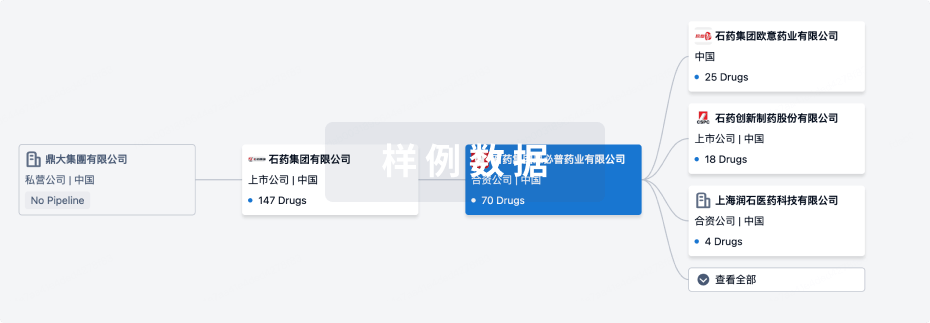
管线布局
2026年01月07日管线快照
管线布局中药物为当前组织机构及其子机构作为药物机构进行统计,早期临床1期并入临床1期,临床1/2期并入临床2期,临床2/3期并入临床3期
临床前
1
1
临床2期
其他
1
登录后查看更多信息
当前项目
| 药物(靶点) | 适应症 | 全球最高研发状态 |
|---|---|---|
IMB-203 ( SDH2 ) | 遗传性代谢缺陷病 更多 | 临床前 |
Ninerafaxstat ( ACAA2 x HADHB ) | 缺血 更多 | 无进展 |
IMB-202 | 丙酸血症 更多 | 无进展 |
登录后查看更多信息
药物交易
使用我们的药物交易数据加速您的研究。
登录
或
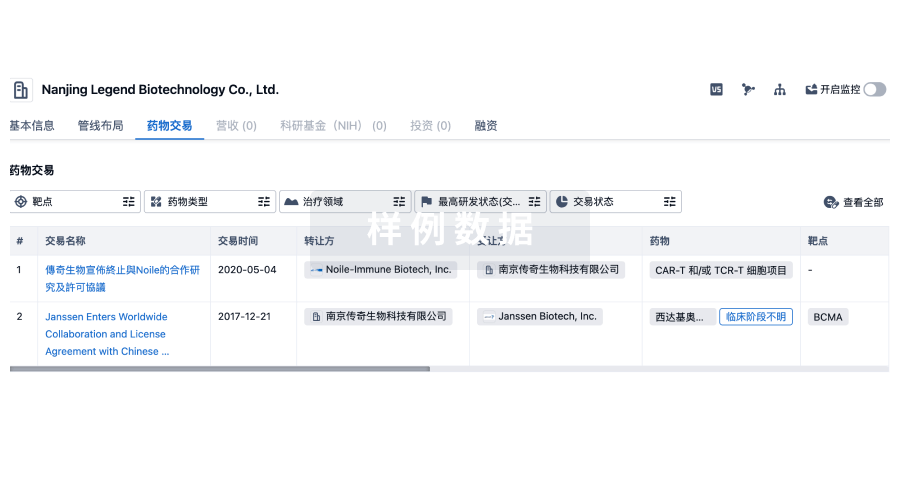
转化医学
使用我们的转化医学数据加速您的研究。
登录
或
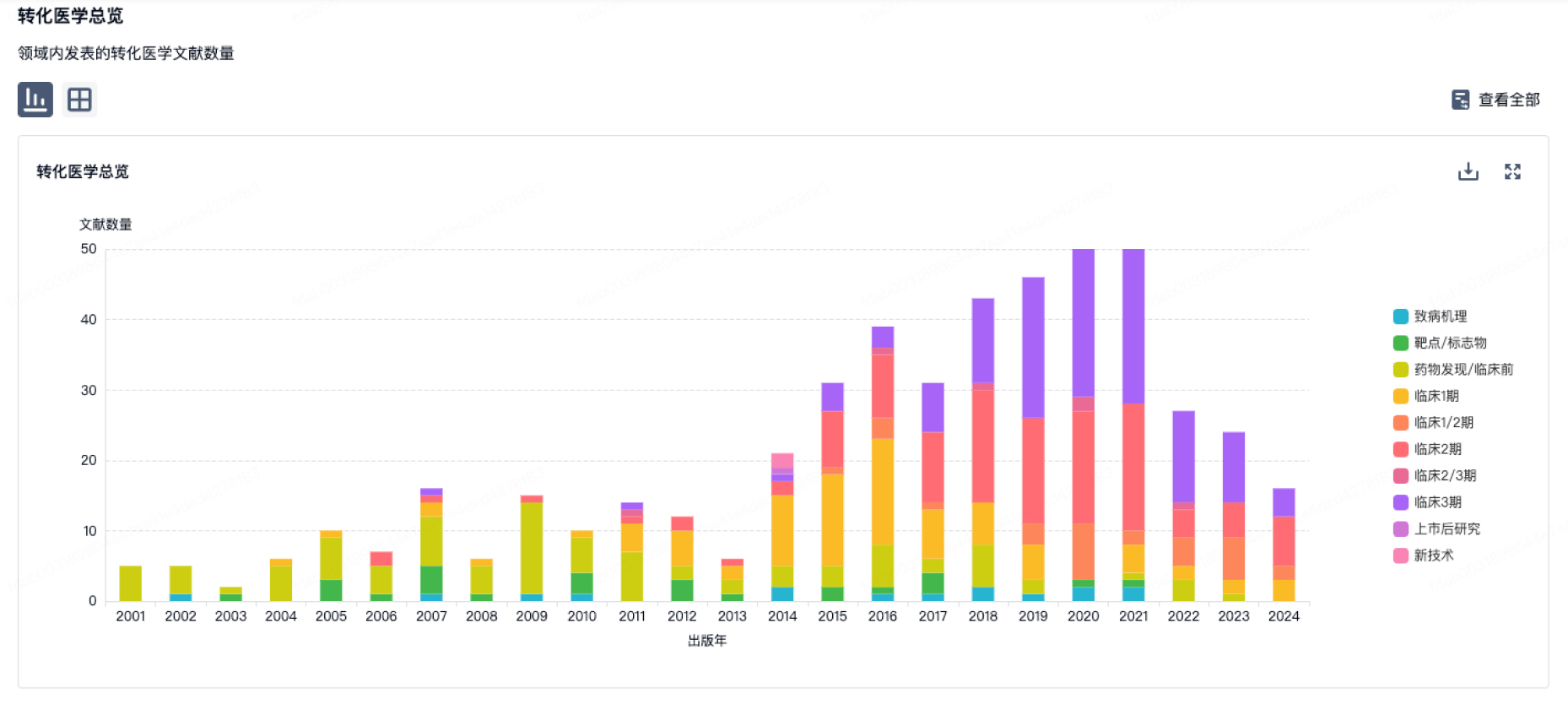
营收
使用 Synapse 探索超过 36 万个组织的财务状况。
登录
或
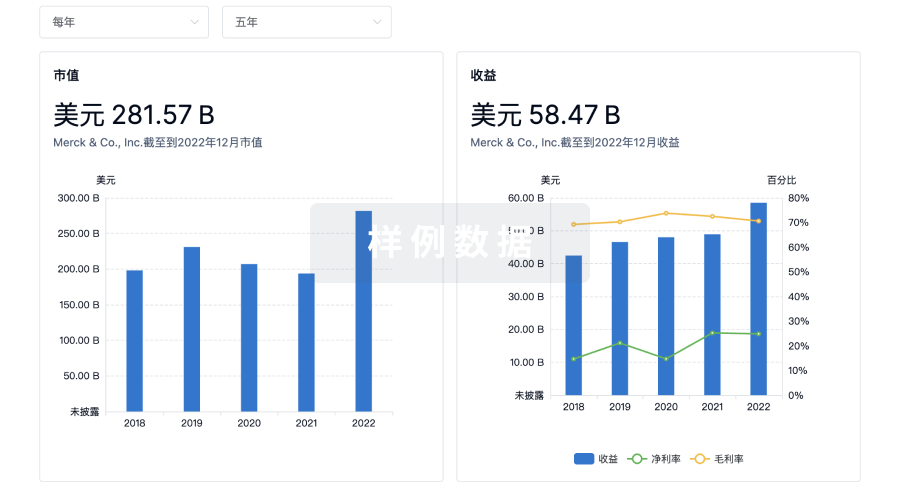
科研基金(NIH)
访问超过 200 万项资助和基金信息,以提升您的研究之旅。
登录
或

投资
深入了解从初创企业到成熟企业的最新公司投资动态。
登录
或
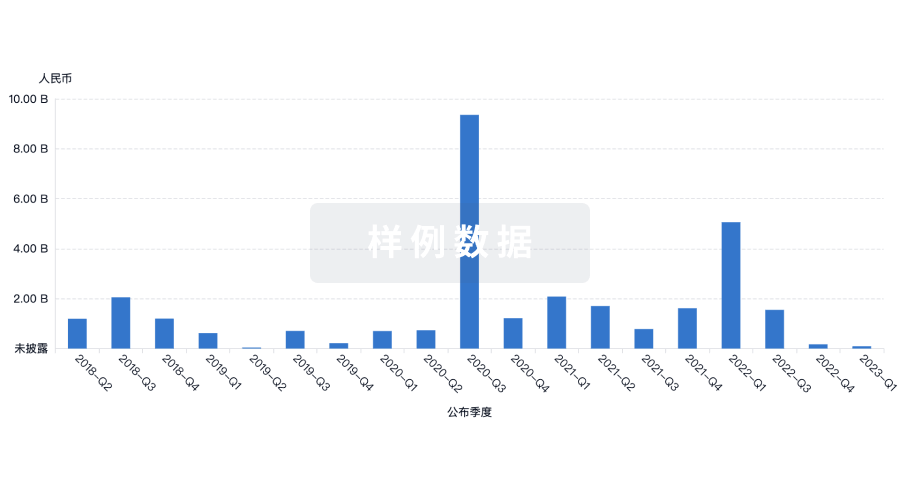
融资
发掘融资趋势以验证和推进您的投资机会。
登录
或
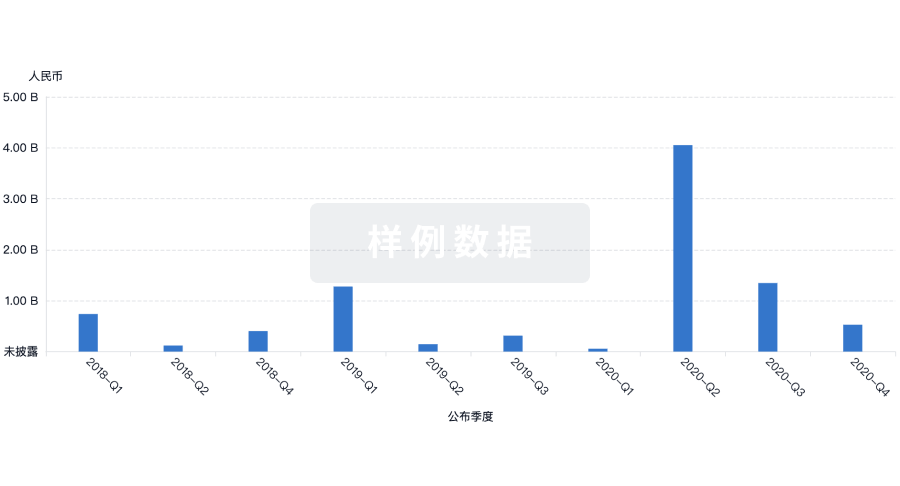
生物医药百科问答
全新生物医药AI Agent 覆盖科研全链路,让突破性发现快人一步
立即开始免费试用!
智慧芽新药情报库是智慧芽专为生命科学人士构建的基于AI的创新药情报平台,助您全方位提升您的研发与决策效率。
立即开始数据试用!
智慧芽新药库数据也通过智慧芽数据服务平台,以API或者数据包形式对外开放,助您更加充分利用智慧芽新药情报信息。
生物序列数据库
生物药研发创新
免费使用
化学结构数据库
小分子化药研发创新
免费使用